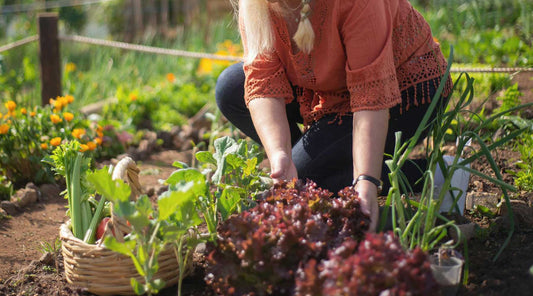Summer is in full swing now, which means there’s plenty to do in your garden this month. From being on high alert for invading insects to obsessing over moisture, this is a time for constant vigilance and careful tending to your garden. All that hard work pays off, though, as this is also the time to reap the benefits of your edible plantings. Berry pie, anyone?
Before we can eat pie, though, we’ve got work to do! To make your July gardening a little bit easier, we’ve compiled all the things to do this month into one ultimate to-do list. Check a few things off this list each week to ensure your garden is in tip-top shape as the summer rolls on.
Fruits and vegetables
- Prune unruly tomato plants and make sure they’re staked up or caged. Too many suckers mean too much competition for nutrients and smaller fruit.
- On that note, prune any fruit trees as they’ll have the same issue with new growth trying to steal energy from fruiting branches.
- Your blueberry bushes should have netting on them by now and be starting to fruit. Pick ripe berries daily before the birds can get to them.
- Pick ripening fruits and veggies regularly. This will help improve yields since many will keep bearing throughout the summer as long as you keep picking what’s ripe.
- Sow peas in late July for a delicious fall crop.

Pests and insects
- July invites bursts of insect infestations, so keep an extra close eye out for these little invaders.
- Take note of any uninvited visitors to the garden – groundhogs or rabbits taking a toll? There’s not much to do now, but you can take note for next year and opt for plants they’re less fond of.
- Got biting insects? Attract some bug-hungry birds with a Yard Tree Bird Center and some bright native flowers.
- Remove slugs and snails by hand. Sluggo is also a great organic option if you're overrun with these slimy pests.
- If pests like spider mites, aphids, or maggot flies have taken over, sometimes it’s best to sacrifice the plant they’ve infected to save the rest of your garden.
Flowers
- Deadhead any annuals or flowering plants to promote blooming and focus energy on new growth.
- Check your local garden center for sales on annuals. With a little extra love, they can come alive for fall plantings.
- Trim back your heat-loving annuals (like petunias) to encourage new growth.
- Container plants can quickly use up all the nutrients in their potting soil.
- Use fertilizer to keep them growing strong. (Beware: the banana compost tea that’s making the rounds on social media lately is great in theory, but not so great in practice – especially for indoor plants. The sweet sugary goodness is likely to attract gnats and other unwanted insects into your home. Consider good old-fashioned compost instead).

Maintenance and watering
- It’s more critical than ever during these hot months to ensure your irrigation is working properly. Check for clogs, leaks, or breakage that could threaten the water supply of your plants.
- Be prepared to hand-water on particularly hot days. Your fruiting plants will be especially thirsty, so keep a pulse on their soil moisture and give them extra water if they’re getting too dry.
- Mulch wherever possible to conserve moisture. In the West, even typically wet climates will be experiencing a severe drought this year, so take extra care to practice responsible water use in your garden.
- Deepwater trees and shrubs with a deep root irrigator. It’s more efficient (less runoff and evaporation) and helps plants survive periods of drought and high temperature.
Enjoy every minute
Despite the hard work and pesky insects, this warm and bountiful time in your garden is priceless. Enjoy every minute of it before the cool, dark days roll back around. Soon enough, you’ll be missing the heat, the harvest, and the burst of life in your garden.Pictures make it last! Share photos on social media and be sure to tag us so we can ogle at your beautiful garden all year long. We’re on Twitter, Facebook, Instagram, and YouTube.






